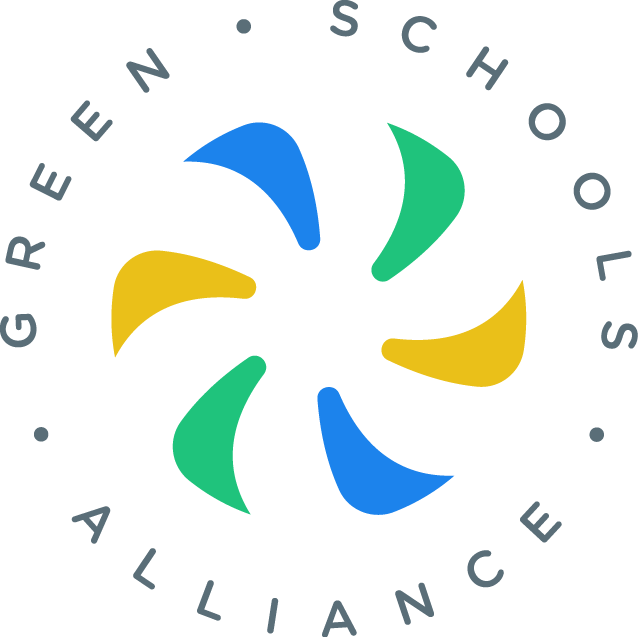
Educational Programs
Teaching Sustainability
START Metric #6:
Course Content
Ideas & Resources

Embedding regenerative sustainability concepts into existing academic subjects across all grade levels enables students to connect environmental challenges with their everyday learning. This approach emphasizes practical applications, such as exploring renewable energy in science or discussing environmental themes in literature, fostering critical thinking and creativity. By integrating regenerative sustainability into diverse subjects, schools cultivate a culture where students are empowered to actively participate in restoring and revitalizing the natural systems that support all life.
By embedding sustainability into diverse subjects, schools can ensure that every student develops the knowledge, skills, and creative thinking needed to address global challenges. This approach also fosters critical thinking and creativity, encouraging students to view sustainability as an integral part of life, not just an academic topic.

Strategies for Incorporating Sustainability into Course Content
NOTE: This is not a prescriptive list; it just offers ideas to inspire action and can be tailored to fit the unique needs of each school.
Map Sustainability Concepts to Existing Curriculum
Identify where sustainability topics align with current learning objectives across subjects and grade levels.
Use this mapping to integrate concepts naturally without overloading the curriculum.
Provide Teacher Training
Offer professional development sessions to help teachers incorporate sustainability into their subjects.
Share resources, lesson plans, and examples of how other schools have successfully embedded sustainability.
Incorporate Local Context
Use local environmental or social issues to make sustainability topics more relevant to students. For example, study local water conservation efforts in science or analyze local transportation policies in social studies.
Use Interdisciplinary Projects
Encourage collaboration between teachers of different subjects to create interdisciplinary sustainability projects. For example, a math class could calculate carbon footprints while a geography class examines their global impact.
Embed Sustainability into Science Lessons
Explore topics like renewable energy, climate, biodiversity, ecosystems, and waste management.
Conduct experiments or fieldwork to deepen understanding and engagement.
Infuse Sustainability into Language Arts
Students could write analytical, descriptive or persuasive pieces or stories about environmental challenges.
Incorporate Sustainability into Social Studies
Examine historical and current events through a sustainability lens, such as the industrial revolution’s environmental impact or climate migration.
Include Sustainability in Math Lessons
Use real-world data to teach concepts like statistics or graphing, such as analyzing waste reduction metrics or energy consumption.
Explore budgeting and resource allocation for sustainable projects.
Bring Sustainability to Art and Design
Encourage students to create art using recycled materials or design eco-friendly solutions to community challenges.
Explore themes of nature, conservation, and climate change in art projects.
Highlight Sustainability in Physical Education
Teach about the connection between health, well-being, and sustainable lifestyles.
Incorporate activities like outdoor education or projects that focus on active transportation, such as biking or walking.
Leverage Technology
Use digital tools and resources to bring sustainability topics into the classroom, such as climate modeling software or interactive maps.
Encourage students to research and present on sustainability topics using multimedia tools.
Use Current Events and Case Studies
Discuss recent news stories or case studies related to sustainability to make lessons timely and relevant.
Encourage students to explore and propose solutions to real-world problems.
Incorporate Hands-On Activities
Use practical activities, like building a compost system, calculating energy efficiency, or designing a green building. These experiences help students apply theoretical concepts to real-world situations.
Encourage Student-Led Initiatives
Allow students to identify sustainability topics they’re passionate about and design projects around them.
Use these projects as part of assessments or class discussions.
Create a Progression Across Grades
Develop a framework that builds on sustainability concepts year by year, starting with simple ideas in early grades and progressing to complex issues in higher grades.
Celebrate Sustainability Across the School
Highlight student projects and achievements in sustainability through assemblies, showcases, or newsletters.
Use these moments to reinforce the importance of sustainability in all areas of learning.
Collaborate with Community Experts
Bring in guest speakers or partner with local organizations to provide real-world insights into sustainability topics. Use these collaborations to enhance the relevance of classroom lessons.
Incorporate Reflection and Discussion
Encourage students to reflect on their learning and discuss how sustainability topics relate to their lives.
‘How To’ Guides
-

How to teach young students about climate change without causing anxiety
Earth Warriors provide tips and resources for teaching climate education through a positive, empowering approach.
-

How to educate students on our food system’s impact on the environment
From the Educated Choices Program, resources for teaching students ages 12-18 about the impacts of their food choices.
-

How to Recognize and Reduce Carbon Footprint: Advanced Students
From the Educated Choices Program, how to educate more advanced students how to recognize and reduce their carbon footprint, starting with their food choices.
-

UNESCO's Greening Curriculum Guidance
This Guidance was developed through the Greening Education Partnership* with critical input from young people, as a joint effort to establish common understanding on quality education for climate action.
-

SubjectToClimate: K-12 Climate Change Lessons
From SubjectToClimate, discover how to integrate climate change into the subjects you already teach through these inquiry-driven, teacher-oriented, and ready-to-use lesson plans created by teachers like you. Read more about their lesson plan framework.
-

ClimateScience: Curriculum-Aligned Resources
Access a wide range of FREE curriculum-aligned teaching resources for all ages & filter by age group and subject.
-

GenerationClimate: Teaching Resources
Generation Climate has a range of resources for teaching about climate in their Resource Library.
-

National Geographic PreK-12 Education Resources
Explorer classrooms, live events, free maps, videos, interactives, and other resources.
-

PBS Learning Media
From PBS Media, a library of videos, lesson plans, documents and galleries for students in Grades 3-5, 6-8, 9-12.
-

OpenSci Ed (STEM)
K-12 FRAMEWORK FOR SCIENCE EDUCATION: The OpenSciEd program was written from the ground up for Framework-based standards like the NGSS.
-

CELF: Children's Environmental Literacy
Explore a wide range of Grade K-12 lessons & activities.
Schools hold the key to a healthy, sustainable and regenerative future.
Education equips learners with the knowledge, skills, and mindset to understand and respond to today’s environmental challenges and their impacts, and to help restore and regenerate the natural systems we depend on.
Schools can prepare students to think critically, act creatively, and contribute to a future where communities and ecosystems can thrive—now and for generations to come.
But how do we get there?

START: Sustainability Tracking, Analytics & Roadmap Tool was created by schools, for schools, to help them develop comprehensive programs for step-by-step progress towards sustainability, regenerative practice, and student empowerment.
START provides a Roadmap for School Sustainability:
It breaks down school sustainability into clear actions (‘metrics’), such as Minimizing Waste, Reducing Greenhouse Gas Emissions, and supporting Sustainable Transportation options.
However, research shows it’s not enough for a school to simply reduce its environmental impact in its Physical Place (buildings & grounds).
Students and staff also need to learn about sustainability (Educational Programs), and practice it in day-to-day activities (Organizational Culture), because hands-on involvement fosters lasting habits and a deeper understanding of our shared responsibility for environmental stewardship.
How sustainable is our school now?
Schools use START to measure how sustainable they are now. A school’s START team investigates how their school currently operates to find their ‘sustainability baseline’ for each metric. For example, is our school a beginner, intermediate or advanced in sustainable water use? START enables schools to benchmark, track and visualize their current sustainability levels, as well as hard data around their waste, water, energy and greenhouse gas emissions.
Where should we go next, and how can we collaborate for success?
What do we need to do to ‘level up’ in each metric? Once schools have their baselines, START helps them to set goals and plan for progress. START provides a central hub for school members to collaborate, document, and plan their school’s sustainability journey.

START is a subscription-based Whole School Sustainability dashboard.
It requires at least one adult school member to create a school’s START account, but it will need a team (students, teachers and staff) to grow a Whole School Sustainability program.
Interested schools can sign up for a demo or apply to set up an account.
Learn more about START here, and consider sharing the brochure with your school.
Let’s create a better future, one school at a time.
Contact us at guides@greenschoolsalliance.org if you have a free resource to contribute or recommend that can help schools take action around this specific sustainability metric.






